Hello! I’m Sarah, a local living in Epernay, and I spend my days exploring the Champagne region, visiting cellars in Epernay, Reims, and the surrounding villages. I’m always researching the best experiences to help you make the most of your stay in Champagne.
Today, I’m diving into the fascinating story of Dom Pérignon—the famous monk whose name has become synonymous with luxury Champagne. What is the history of Dom Pérignon? How much does a tasting experience with his iconic Champagne cost? And where can you buy Dom Pérignon to enjoy at home? Let’s explore!
Where to sleep in Epernay – Champagne Region ?
Studio 86
Epernay
Terrasse 86
Epernay
Jacuzzi 86
Epernay
Magnum 80
Epernay
Alcohol abuse is dangerous for your health. Please drink responsibly.
Introduction to Dom Pérignon and Hautvillers: The heart of Champagne
Welcome to Hautvillers, a picturesque village in the Champagne region, often called the birthplace of Champagne itself, thanks to the legendary Dom Pérignon. Dom Pérignon was a Benedictine monk whose dedication to winemaking helped vinification techniques that are still used today. While he didn’t invent Champagne as we know it, his expertise in blending grapes and creating balanced wines left a lasting mark.
Book your hotel for your stay in Champagne
My tip: book your hotel in Champagne as early as you can, especially during high season. Prices go up as the date approaches, and the best deals tend to sell out fast. For hassle-free booking, I personally recommend Booking due to its user-friendly interface, flexible cancellation policies, and wide range of accommodations, from charming guesthouses to luxury hotels. Plus, the more you use it, the more perks you unlock, like the Genius loyalty program offering exclusive benefits.
But Hautvillers is more than just the birthplace of Dom Pérignon—it’s a beautiful village that has become a symbol of Champagne’s heritage. Known for its independent winemakers and breathtaking views over the Marne Valley, Hautvillers is a must-visit, perfect for a leisurely half-day trip. As you wander the quaint streets, you’ll find incredible viewpoints overlooking the vineyards, each offering a glimpse into the landscape that inspired Champagne’s history. For more on what makes Hautvillers unforgettable, you can check out my list of the 12 top activities in Champagne or my detailed guide to Hautvillers itself.
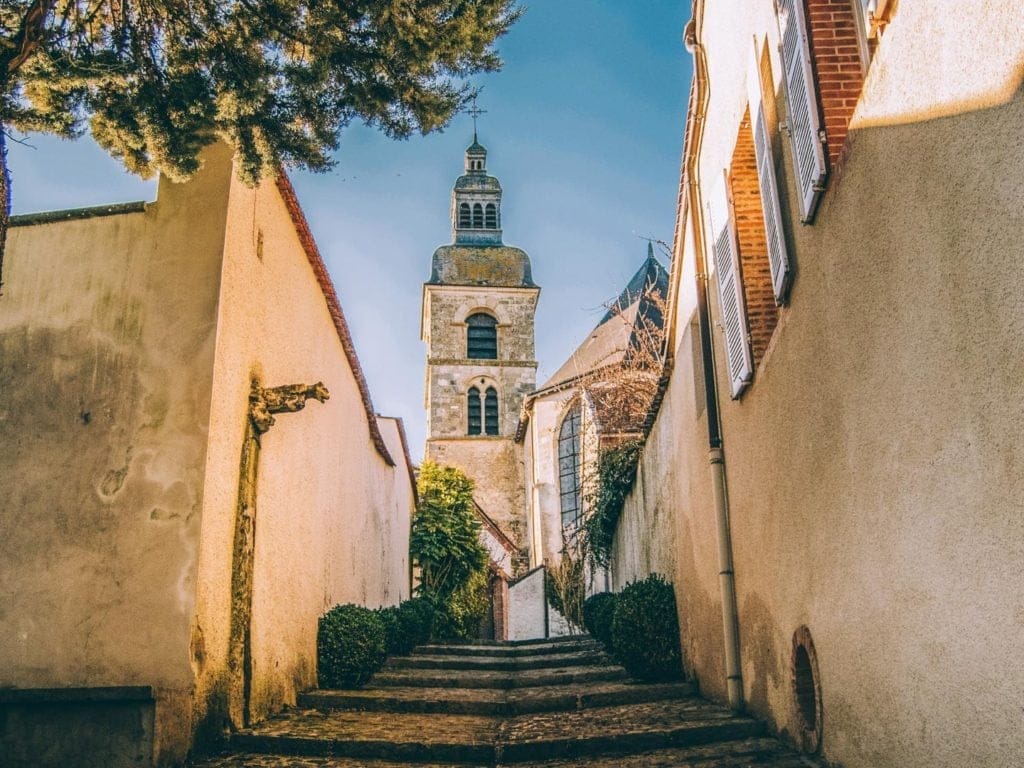
Dom Pérignon wine tours: What to expect
Visitors often wonder, “Can I take a dedicated Dom Pérignon winery tour?” or “Does a Dom Pérignon wine tour take place in Hautvillers?” While a stand-alone tour for Dom Pérignon doesn’t exist, a visit to the renowned Moët & Chandon cellars in Epernay is the closest experience available. For those wanting to connect with the legacy of Dom Pérignon, each tour at Moët & Chandon offers insights into the blending artistry and craftsmanship that shape each vintage, capturing the unique character of every harvest and the climate of Champagne.
At Moët & Chandon, you’ll descend into the historic chalk cellars for a unique, behind-the-scenes look at the meticulous winemaking process—from the careful selection of grapes to the intricate art of blending and aging.
If you’re simply looking to enjoy Dom Pérignon without a full tour, Moët & Chandon offers a walk-in tasting experience:
- By the glass:
- Vintage 2015 – €55
- Vintage Rosé – €75
- Plénitude 2 2006 – €95
- By the bottle:
- Vintage 2015 – €270
- Rosé 2009 – €400
- Plénitude 2 2006 – €500
In the summer, you can enjoy your tasting in the beautiful back garden or the elegant courtyard overlooking the Avenue de Champagne. Whether you’re taking a full tour or enjoying a glass, this experience is a memorable way to connect with one of Champagne’s most celebrated legacies.
And if you’d like to discover more renowned houses to visit in Épernay, don’t miss our selection of the most beautiful Champagne cellars in Épernay.
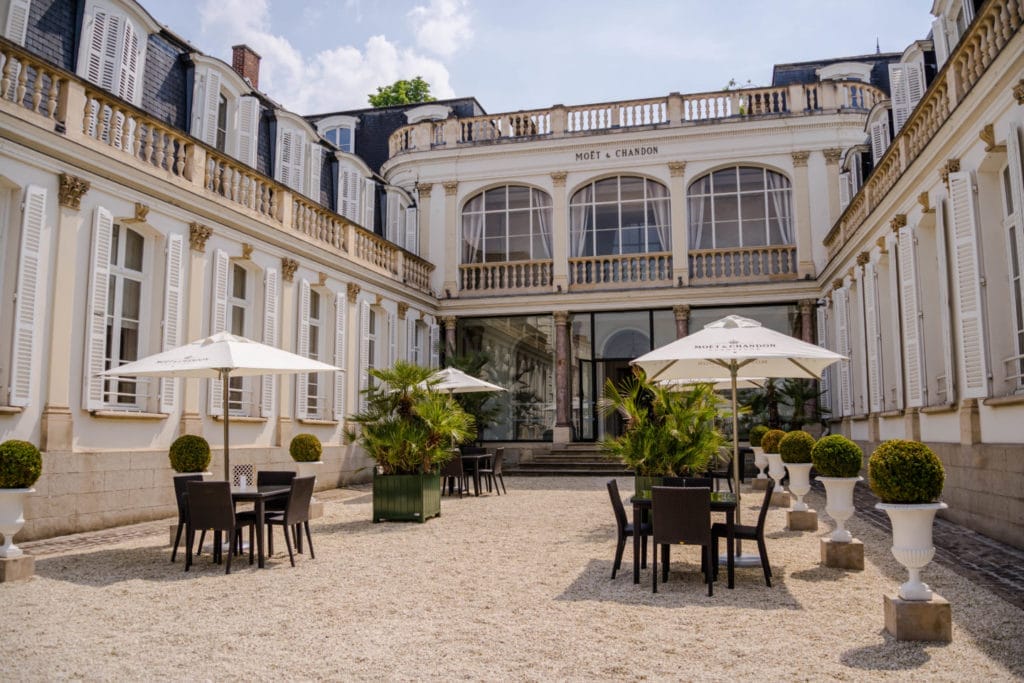
The Dom Pérignon statue in Hautvillers: A perfect photo spot
So there’s this statue of Dom Pérignon in Hautvillers that you simply can’t miss. Imagine a bronze tribute to the man who made Champagne what it is today, standing proud in the heart of his old village. It’s almost like he’s saying, “Yes, raise a glass to me!”
Now, for photo enthusiasts (and let’s face it, Instagram fans), this is your golden opportunity.
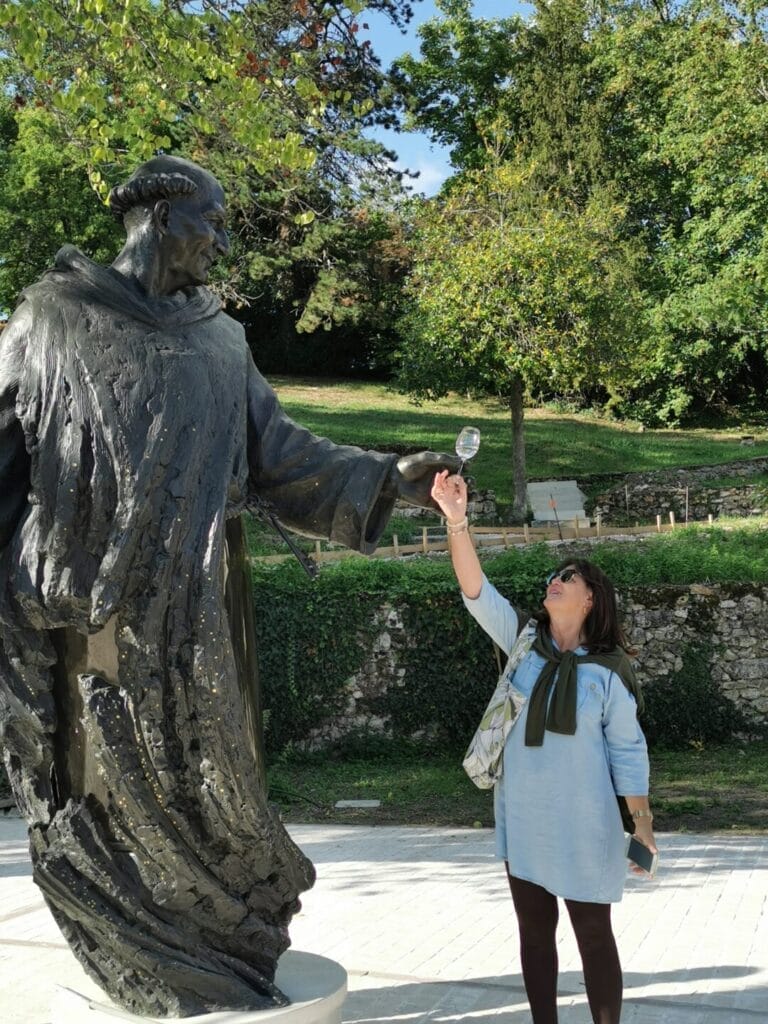
But that’s not all—there’s another Dom Pérignon statue in the courtyard of the Moët & Chandon Champagne House in Epernay. It’s another iconic spot to snap a picture and commemorate your journey through Champagne’s most legendary sites. Make sure to capture both before heading off to your next adventure!
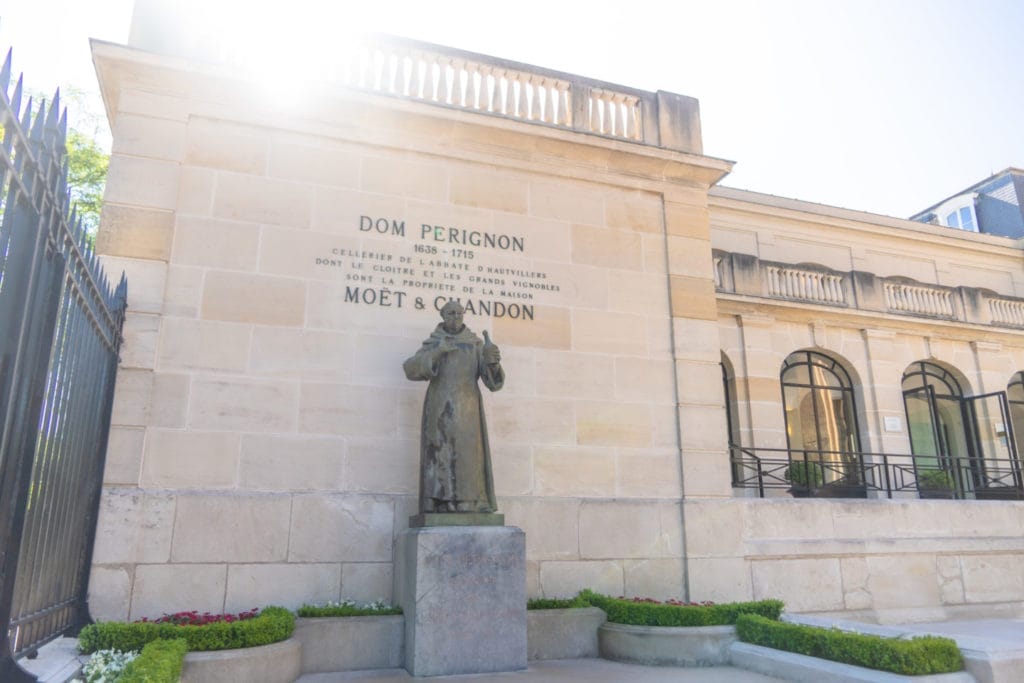
Exploring the abbey of Saint-Pierre: Where Dom Pérignon is buried
For anyone visiting Hautvillers, the Abbey of Saint-Pierre isn’t just an old building—it’s the final resting place of Dom Pérignon. Entry is free, so you can wander in and feel a bit closer to Champagne’s history without spending a cent. The abbey has a beautiful simplicity, surrounded by lush vineyards, and it’s easy to imagine Dom himself here, refining his winemaking skills in his quest for the perfect blend.
This is the quiet, reflective part of your trip. If you’ve been buzzing around tasting glasses of bubbly, a stop here gives you a peaceful moment to soak in the history.
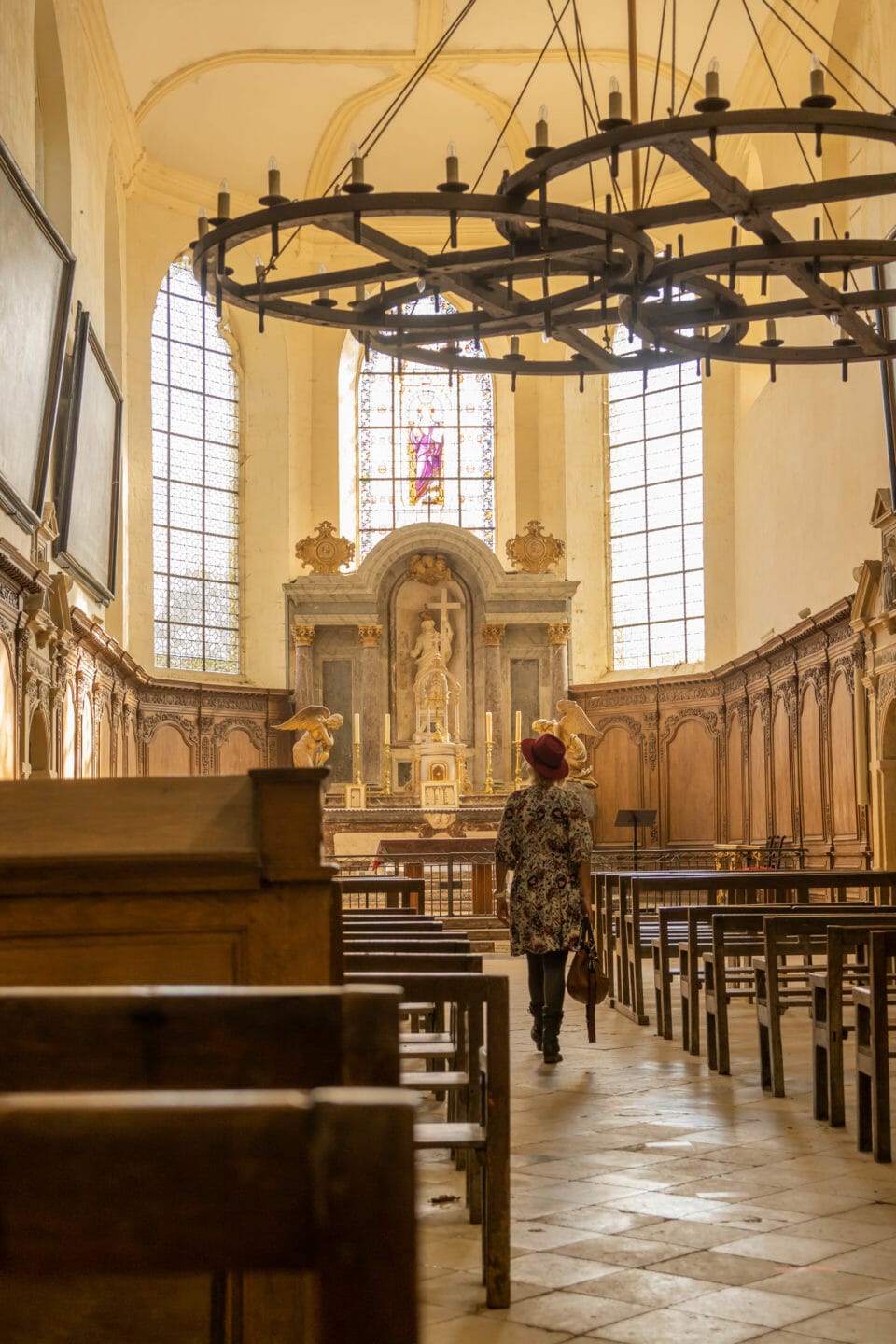
The advantages of a Dom Pérignon-focused guided tour
Let’s be honest: Champagne history can feel like a lot to take in. A guided tour in Hautvillers or any of the local villages makes everything so much richer. You’ll get the insider scoop on Dom Pérignon’s life, hear local stories, and maybe even catch some Champagne secrets you’d never know otherwise. Plus, most tours offer pick-up and drop-off, so you can simply relax and enjoy.
Small group tours are especially popular—you won’t feel lost in a crowd, and it’s easy to ask questions, chat with others, and leave with a true understanding of what makes each sip of Champagne so special. Here are some top options for discovering Hautvillers and Dom Pérignon’s legacy:
- Electric Bike Tour: Explore Hautvillers and its beautiful vineyards by electric bike. This tour includes lunch in the charming village of Mareuil-sur-Ay and a Champagne tasting workshop. It’s the ultimate way to see the vineyards up close and learn about the area, guided by a local expert sharing stories and history as you go.
- From Reims: Staying in Reims? Hautvillers is only a 30-minute drive away, so you can easily join a guided tour from Reims that includes transport and lunch—perfect if you want to visit Hautvillers without planning the details yourself.
- Vintage Van Tour: Travel back in time with a tour in a vintage 1980s van! This unique half- or full-day tour takes you through several Champagne villages, creating an unforgettable experience as you explore in retro style.
- Dom Pérignon & Dom Ruinart Day Excursion: For a full day of luxury, this tour offers a double tasting of Dom Pérignon and Dom Ruinart, a Michelin-star lunch, and pick-up directly from your accommodation. You’ll visit the famous Ruinart cellars in Reims as well—an exceptional experience for true Champagne lovers.

Understanding Dom Pérignon’s legacy in Champagne
So, who was Dom Pierre Pérignon, really? Born in 1638, he was a Benedictine monk and cellar master at the Abbey of Saint-Pierre in Hautvillers, near Epernay. More than just a winemaker, Dom Pérignon was responsible for managing the abbey’s provisions, and he dedicated his life to refining the quality of its wines, which were already well-regarded throughout the region. In an era when Champagne wines often lacked balance, Dom Pérignon took on the challenge of crafting a truly harmonious blend.
One of Dom Pérignon’s major contributions was his mastery of blending. Rather than producing a wine from a single vineyard or grape variety, he worked on mixing grapes from different vineyards to create a wine with balanced and nuanced flavors. This art of blending, which remains at the heart of Champagne-making today, allows winemakers to create complex, refined cuvées that define the region’s wines.
Contrary to popular belief, Dom Pérignon was not trying to create bubbles—he was actually trying to prevent them! At the time, spontaneous fermentation in bottles led to unpredictable fizz, and many bottles would explode under pressure, leading to significant losses. Still wines, without bubbles, were considered more sophisticated. Dom Pérignon aimed to control this fermentation, ensuring a stable, elegant wine.
It was only decades after his death in 1715 that modern champagnization techniques finally harnessed the effervescence, making the bubbles we now love a signature feature of Champagne. But Dom Pérignon’s legacy—his dedication to the art of blending and his pursuit of perfection—laid the foundation for what Champagne would one day become.
Where to stay in Champagne Region ?
Book the best accommodation in top Champagne towns
Epernay
Reims
Hautvillers
Ay
This article contains affiliate marketing: this means that I get a small commission on the Booking links.
This allows the blog to live (translation, etc.) however it does not increase the price for you.
How Dom Pérignon and Veuve Clicquot shaped champagne making
When you think of the pioneers of Champagne, Dom Pérignon and Madame Clicquot stand out as two figures whose innovations helped define it. Dom Pérignon, a master in the art of blending, focused on crafting balanced wines by harmonizing different grape varieties, a method that has become central to Champagne-making. Meanwhile, Madame Clicquot, a widow at 27 who took over her husband’s business against all odds, brought technical advancements that revolutionized the process.
With her invention of the riddling table and her development of blended rosé Champagne, she improved clarity and style, making Champagne more refined and elegant. Just as Dom Pérignon brought harmony to each bottle, Madame Clicquot perfected its brilliance. Together, they set the standards for what Champagne could—and should—be, making it the iconic drink we know today.
To truly appreciate the fascinating story of Madame Clicquot, a visit to her cellars in Reims is a must—and trust me, it’s worth it!
I hope this article has answered some of the questions you might have about Dom Pérignon and shed light on the fascinating history behind this legendary monk and the Champagne-making process he helped shape. From his influence in Hautvillers to the innovations of Madame Clicquot, these figures have truly left their mark on every bottle of Champagne enjoyed today.
If you’re planning a visit to the Champagne region or just want to know more about its rich history, I hope this has helped guide you along the way. Cheers to exploring the roots of Champagne!